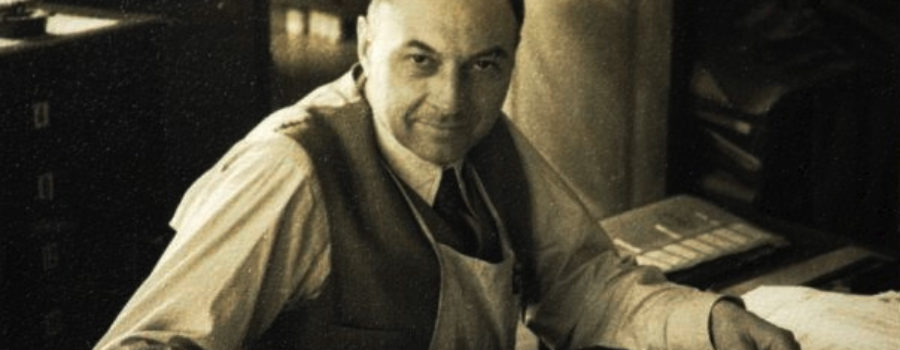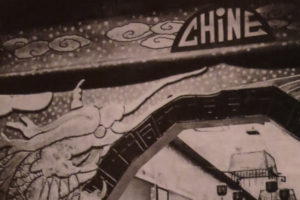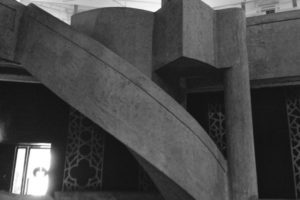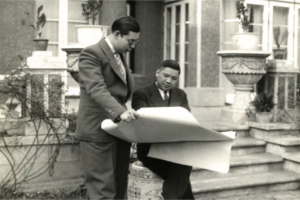For almost three decades, he was Shanghai’s master builder. László Ede Hudec / Ladislav Edvard Hudec (1893-1958) was a Hungarian-Slovak architect who worked in Shanghai from 1918-1945. His creativity was breathtaking and his range was phenomenal: Hudec’s style evolved from the eclectic neo-classicism popular in the early 20th century to Art Deco and modern buildings. He designed landmarks — Art Deco and otherwise — that are still considered icons today. The Park Hotel. The Grand Theatre. The Normandie Apartments. Hudec, Hudec, Hudec. Over sixty buildings, in fact.
Born in 1893 in Besztercebánya, Hungary (now Banská Bystrica, Slovakia), Hudec grew up at a time when great efforts were made to Magyarize (Hungarian-ize) the Slovak population of the Kingdom of Austria-Hungary – a good command of the Hungarian language and a Hungarian-sounding name were necessary to enter the civil service or start a business. His father was a Slovak architect, who in 1890 changed his Slovak name (Juraj Hudec) to the Hungarian György Hugyecz, and his mother, Paula Skultéty, was an ethnic Hungarian. As a schoolboy, László Hudec spent his summers at the construction sites where his father worked – including the tunnels of the Budapest underground, the oldest metro in continental Europe.
He studied architecture at the Hungarian Royal Joseph Technical University in Budapest from 1910 to June 1914. As a patriotic Austro-Hungarian citizen, Hudec volunteered to join the army at the outbreak of World War I. He went to the Russian battlefront in 1915 where his architectural training proved useful in being able to quickly draw maps of the terrain. On June 6, 1916, Hudec and his division stumbled upon a Russian caravan and ammunition carts escorted by Cossacks. They retreated, but were halfway to their own trenches when the Cossacks attacked from all sides, and Hudec was struck on the head and collapsed. He was captured by the Russian Army and sent first to the field hospital and then to a prison camp (Krasnaya Rechka) in Khabarovsk, Siberia. Hudec made a dramatic escape from the prison camp – while being transferred in 1918, he jumped from a train near the Chinese border and made his way to Shanghai via Harbin.

He couldn’t have arrived at a better time, or been in a better place for a young, creative architect. Money was flowing into the cosmopolitan city, and newly minted tycoons and millionaires – Western and Chinese — wanted to show off with grand institutions and mansions in the latest styles. By November of 1918, Hudec had found himself a job as a designer in the office of the American architect Rowland A. Curry. His first project with Curry was the American Club, which still stands on Fuzhou Road.
By the 1920s, Hudec had settled into Shanghai. In 1922 he married Gizela Mayer, who was born in Shanghai to a German father and a Scottish mother; the couple had three children.
In 1925 he left Curry to start his own company, L. E. Hudec, using the Slovak transcription of his name. There has been much speculation as to why he used “Hudec”, which he answers in his autobiography, explaining that the false Russian passport he used to escape from prison camp was “Hudec”, and as it turned out to be easier for the Chinese to pronounce and spell than Hugyecz, it stuck. From 1932-1947, the firm was based in light-filled offices on the 8th floor of the stunning Gothic Deco Christian Literature Society building — a Hudec building, of course.
Over 28 years, the man who had arrived in Shanghai by chance designed and built over 60 buildings, more than half of which survive to this day. Just two of his buildings are outside China – a small chapel in the Slovak town of Vyhne and the home he built for himself and Gizela in Squaw Valley, California. Hudec’s designs were cutting edge and creative, using the latest technologies to his advantage: he built the first air-conditioned hospital in Shanghai, the first brewery, the first movie theatre, and the first skyscraper.
Shanghai’s first Art Deco may have come from France, but Hudec’s inspiration clearly came from America. One look at the Park Hotel and you can see the debt it owes to Hood’s American Radiator building; the same goes for the Normandie and the Flatiron. American Art Deco is distinguished from its French counterpart by simplicity, streamlining, machine-age inspirations, but most of all, for the skyscraper. And this was Hudec’s contribution to the Shanghai skyline: the 22-storey Park Hotel, the first skyscraper in Asia and Shanghai’s tallest building well into the 1980s.World-famous architect I.M. Pei recalled coming out of the Grand Theater next door, looking up at the spectacular profile of the Park Hotel, and knowing then that creating buildings was going to be his life’s work. Today, surrounded by giant buildings battling for skyscraper supremacy, it’s difficult to imagine both the wonder and pride that the Park Hotel generated. It was such that even during the Cultural Revolution, when the capitalism that had built it this monument had been banished, the Park Hotel retained pride of place as a backdrop for photographs.
In 1938, Czechoslovakia was dissolved under the Munich agreement and Hudec lost his Czechoslovak citizenship. He applied for a Hungarian passport and obtained it in 1941. When the Japanese invaded in 1937, Hudec could no longer work as an architect – instead, he was appointed Honorary Consul of Hungary in Shanghai, and used his position to save Jewish families. He employed Hungarian Jews in his Consulate, and fought with the Japanese military authorities to keep former Hungarian subjects out of Shanghai’s Jewish ghetto. There exist a number of letters written after the war by Jews expressing their gratitude to Hudec for saving them from the ghetto.
Well aware of the winds of change, Hudec and his family left China in 1947 for Europe and in 1950 for the US. Hudec had been sending money from Shanghai to Switzerland, and as a result, was comfortably well off. He spent the last years of his life in California teaching and researching early Christian philosophy and culture at the University of California at Berkeley. He died in 1958 at the age of 65, and at his express wish was buried in the town of his birth – Banská Bystrica, Slovakia.
| Building Name | Date | Address |
|---|---|---|
| Aurora College for Women | 1937 | 143 Changle Road |
| Aurora University | 1938 | 223 Chongqing Road |
| Avenue Apartments | 1932 | 1342 Beijing Road West |
| Burlington Apartments | 1928 | 1225 Nanjing Road West |
| Chekiang Cinema | 1930 | 123 Central Zhejiang Road |
| China Baptist Publication/Christian Literature Society | 1932 | 209 Yuanmingyuan/128 Huqiu Road |
| Grand Theater | 1933 | 216 Nanjing Road West |
| Hubertus Court | 1937 | 918 Yan’an Road West |
| Lafayette Cinema | 1932 | 232 Central Fuxing Road |
| Nanyang Public School Engineering Building (Jiaotong University) | 1931 | 1954 Huashan Road |
| Park Hotel | 1934 | 170 Nanjing Road West |
| D.V. Woo House | 1935 | 33 Tongren Road |
| Union Brewery | 1931 | 82 Yichang Road |
Sources:
http://www.ladislavhudec.eu/index.php?main_page=index&cPath=67
http://www.hudecproject.com/files/Hudec_Autobio_1941_Eng_short.pdf
http://www.hudecproject.com/files/1945_WWII_aftermath_Eng.pdf
http://blogs.wsj.com/chinarealtime/2010/09/07/hudec-the-architect-who-made-shanghai/
Janossy, Peter Samuel and Deke Erh, Life and Work of Laszlo Hudec (2010)
Shanghai Planning Department & Shanghai Construction Archives, Hudec’s Architecture in Shanghai







Most Commented Posts